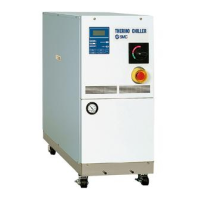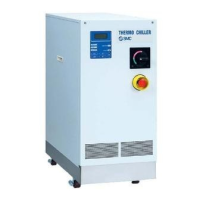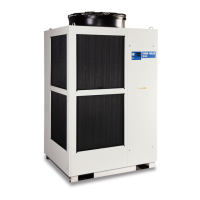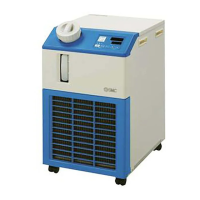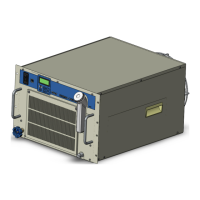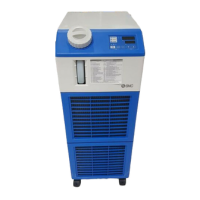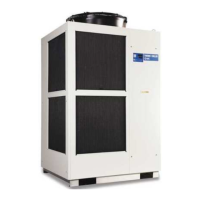DOC1001322
Chapter 7 Control, Inspection and Cleaning
HRL Series 7.2 Inspection and Cleaning
Mounting of dust-proof filters
Reassemble the filters in the reverse order to the removing procedure.
7.2.3 Inspection every 3 months
Table 7.2-3 Contents of every 3 months check
Check the power supply
voltage.
Make sure the supply voltage is within the
specification range.
Replace the circulating
fluid (clean/tap water)
periodically.
・Ensure that the fluid has not been contaminated
and that there is no algae growth.
・Circulating fluid inside the tank must be clean
and there must not be foreign matter inside.
・Use clean/tap water or pure water. The water
quality must be within the range shown in Table
7.1-1 Quality criteria for clean water (tap water).
It is recommended to replace the circulating
fluid every 3 months when periodic maintenance
is performed.
Density control
(When using 15%
concentration ethylene
glycol aqueous solution)
Density must be within the range of 15 % +5/-0.
Replacement of circulating fluid
Replace the circulating fluid with new clean fluid periodically, to
prevent algae or decompose.
Circulating fluid to be supplied in the tank should satisfy the water
quality specified in “Table 7.1-1 Quality criteria for clean water (tap
water)”.
Make sure that the concentration of ethylene glycol aqueous
solution is 15% +5/0 when 15% ethylene glycol solution is used.
When using the Y strainer provided as an accessory for piping,
clean the screen mesh inside the strainer at the same time as
when replacing the circulating fluid.
Ensure that there is no circulating fluid in the thermo-chiller, user's
equipment, and piping. Remove the cap and take out the screen
mesh inside, and clean the screen mesh with compressed air or
detergent. Use caution not to damage the screen mesh.
Do not use chlorine-based or such types of detergents or
cleansers.
Put the screen mesh that has been cleaned into the groove in the
cap, and reassemble it to the body of the strainer.
If there is foreign matter accumulated or clogging in the facility water
system, pressure loss increases with less flow rate, and it may
damage the screen mesh.
